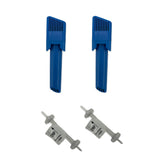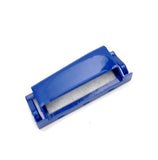Tech Tips
Tech Tips
What CPAP parts need vinegar disinfection?
What CPAP parts need vinegar disinfection?
It is generally not recommended to use vinegar to disinfect the parts of a CPAP machine. Vinegar is a mild acid that can damage some of the materials used in CPAP devices, such as silicone and plastic. In addition, vinegar may not be effective at killing all types of bacteria and germs that can accumulate on the CPAP parts.
To properly disinfect the parts of your CPAP device, it is best to use a dedicated CPAP cleaning solution or a mild soap and water solution. Be sure to rinse the parts thoroughly after cleaning to remove any residue.
There are also a number of CPAP sanitizing machines on the market that use ultraviolet (UV) light or ozone to kill germs and bacteria on the CPAP parts. These devices can be a convenient and effective way to keep your CPAP clean and hygienic.
Regardless of the cleaning method you choose, it is important to follow the manufacturer's instructions for cleaning and disinfecting your CPAP device to avoid damaging the parts or affecting the performance of the device.
It is generally not recommended to use vinegar to disinfect the parts of a CPAP machine. Vinegar is a mild acid that can damage some of the materials used in CPAP devices, such as silicone and plastic. In addition, vinegar may not be effective at killing all types of bacteria and germs that can accumulate on the CPAP parts.
To properly disinfect the parts of your CPAP device, it is best to use a dedicated CPAP cleaning solution or a mild soap and water solution. Be sure to rinse the parts thoroughly after cleaning to remove any residue.
There are also a number of CPAP sanitizing machines on the market that use ultraviolet (UV) light or ozone to kill germs and bacteria on the CPAP parts. These devices can be a convenient and effective way to keep your CPAP clean and hygienic.
Regardless of the cleaning method you choose, it is important to follow the manufacturer's instructions for cleaning and disinfecting your CPAP device to avoid damaging the parts or affecting the performance of the device.







